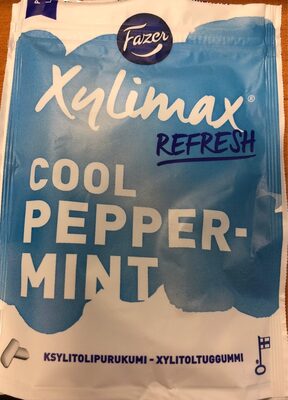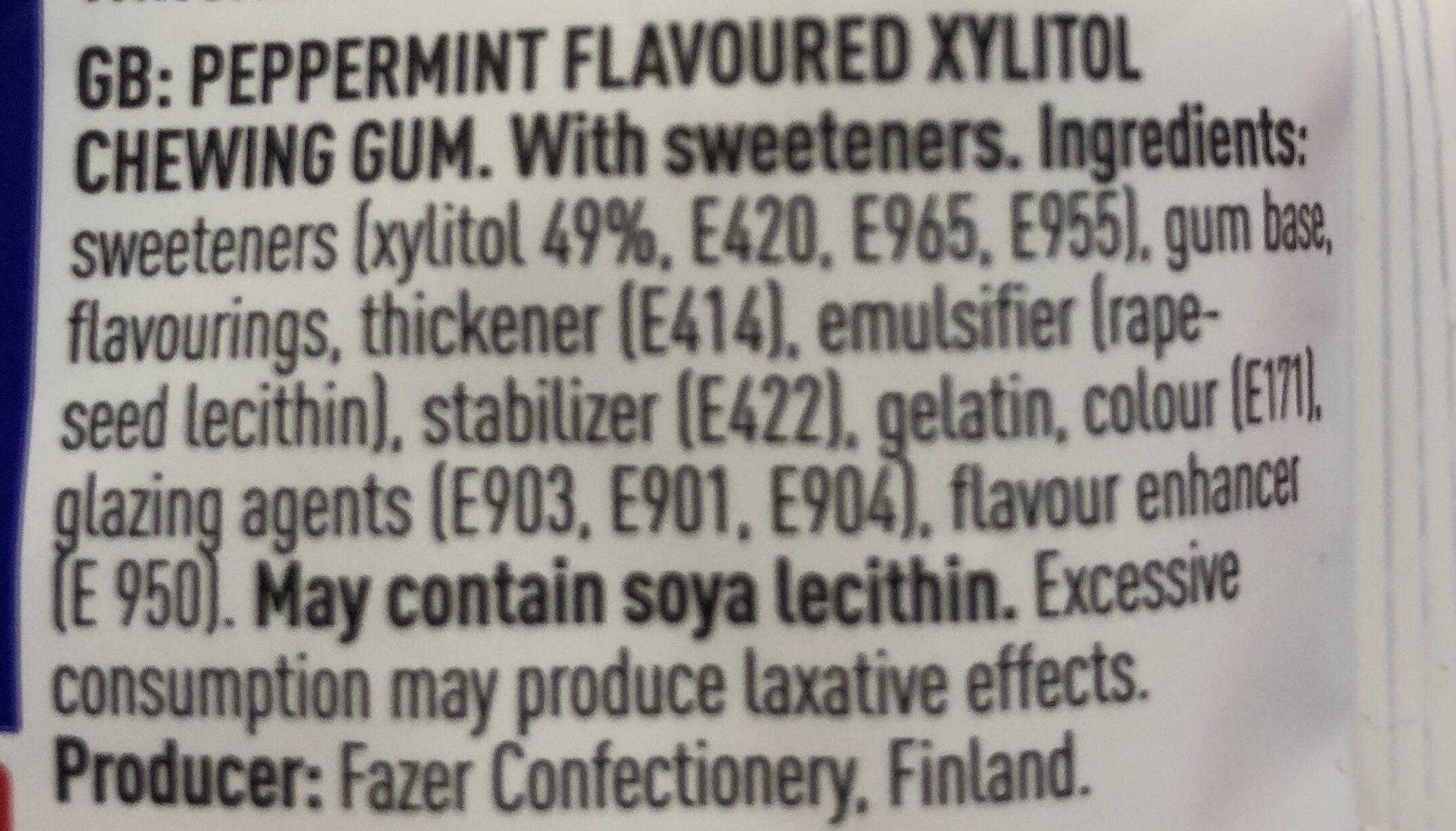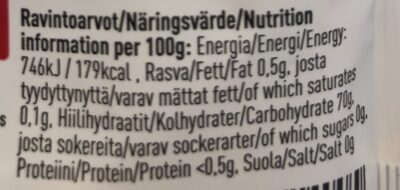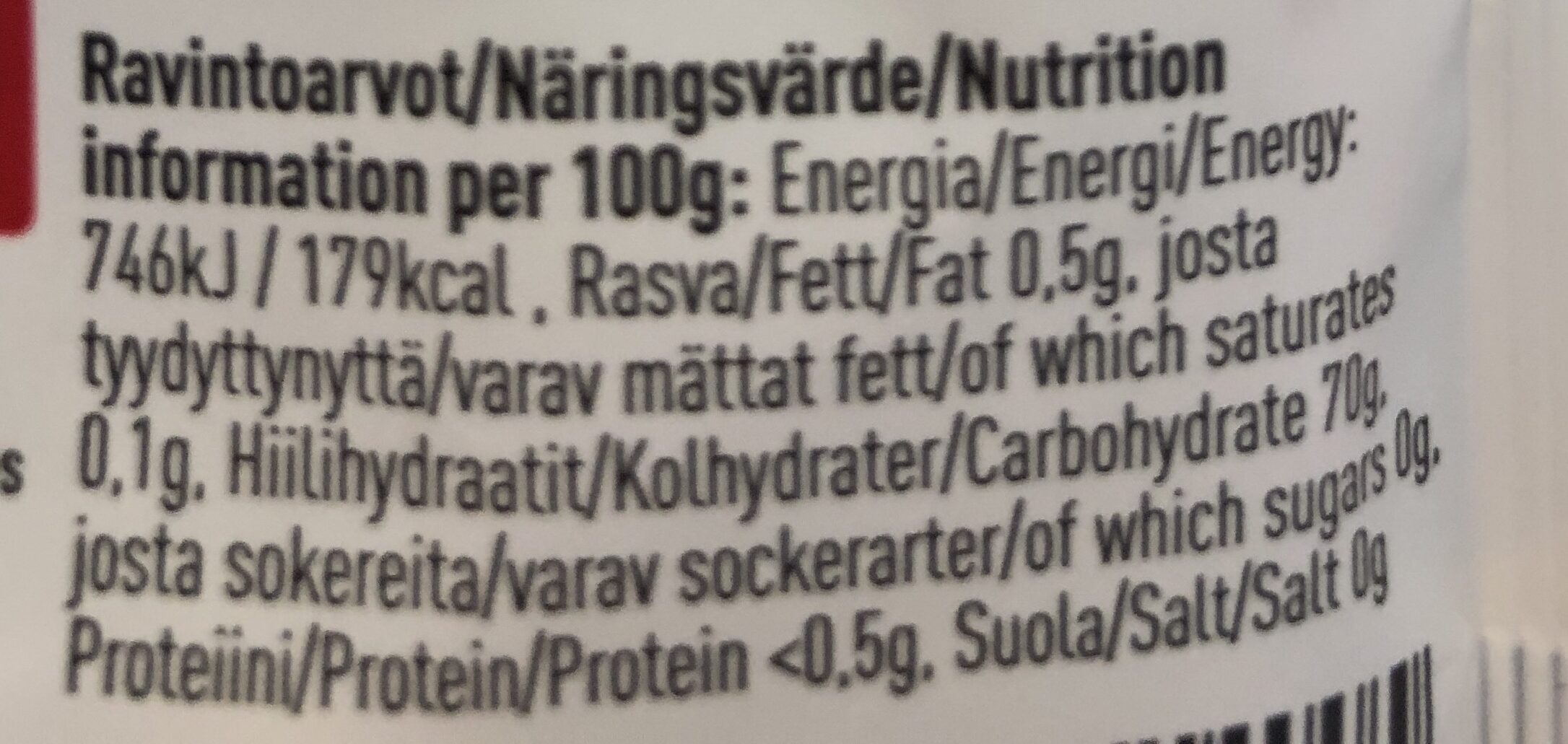Xylimax Refresh Cool Peppermint - Fazer - 38g
This product page is not complete. You can help to complete it by editing it and adding more data from the photos we have, or by taking more photos using the app for Android or iPhone/iPad. Thank you!
×
Streckkod: 6416453114005 (EAN / EAN-13)
Vanligt namn: PEPPERMINT FLAVOURED XYLITOL CHEWING GUM
Kvantitet: 38g
Varumärken: Fazer
Kategorier: Snacks, Söta snacks, Konfekt, en:Chewing gum, en:Sugar-free chewing gum
Etiketter, certifieringar, utmärkelser:
en:Avainlippu, Överdriven konsumtion kan ha laxerande verkan
Tillverknings eller bearbetningsplats: Finland
Matching with your preferences
Miljö
Förpackning
Transportation
Report a problem
Datakällor
Produkt tillagd den av kiliweb
Senast ändrad produktsida på av aleene.
Produktsida också redigerad av arc2, hungergames, jumati, openfoodfacts-contributors, yuka.V3EwcFBxc29vUGtIaDlzK3doWGs5OU5hM3IveWRENnRFT2NPSVE9PQ.









